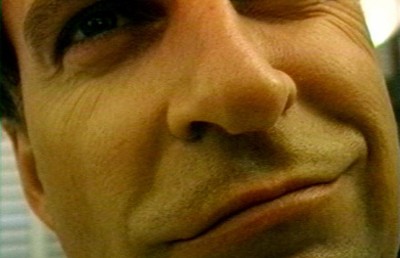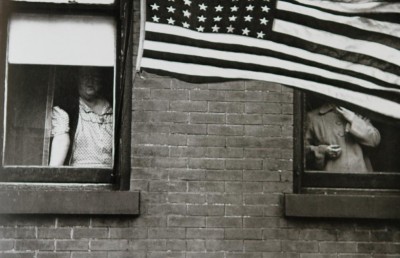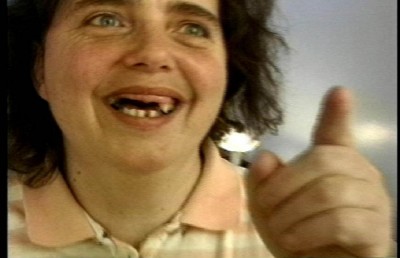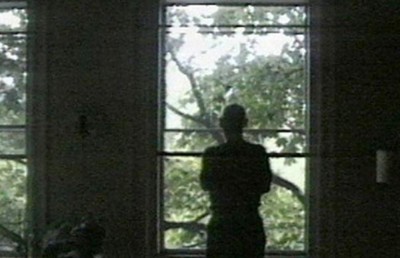Shanghaeid Text
Found Footage
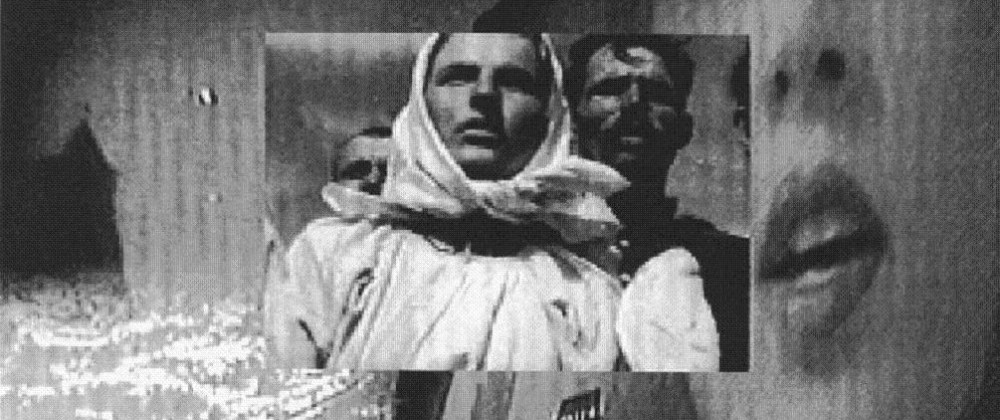
SHANGHAEID TEXT is an interesting experimental short that blends original footage with a variety of found footage (Soviet and Hollywood films, soft porn, riot footage). Though the film works without a knowledge of the borrowed sources, it gains immeasurably on the level of interpretative exposition if you do know the sources. The film begins and ends with shots of snow-drenched tree branches. In between the film builds slowly from contemplative serenity (beautiful still shots of the plains) to a sensory overload of image and sound. The first few minutes take us along an Ansel Adams-like rural America of orangish dusty roads, blowing wheat fields, mountains, and billowing cloud formations. At the 5 minute mark superimposed images from Alexander Dovzhenko’s EARTH begin to appear. The film footage blends naturally into Kobland’s original spaces: people running along the fields, horses galloping along, farmers cultivating the land. Nine minutes in, the film becomes “busy”: fragmented imagery, a digitalized frame within the frame, and manipulated sounds and voices. Within the small frame are rapidly cut shots from EARTH, Fred Zinneman’s HIGH NOON , Dziga Vertov’s THREE SONGS OF LENIN , soft porn, and 1968 riot footage from the U.S. and France.
What does it all mean? The key to the film’s subtext is EARTH and HIGH NOON . EARTH is a classic Soviet film from the pre-socialist realism period. The film was meant as propaganda for collective farming, but Dovzhenko’s use of eroticism (female nudity, nasature/woman-as-fertility) and philosophical naturalism (communism as part of the natural order) made it one of the more controversial Soviet films of its time. Kobland is obviously aware of this discourse when he intercuts and superimposes appropriate shots of EARTH with soft porn imagery.
Another recurring dialectic in the film’s found footage montage is between shots of cowboy Gary Cooper from HIGH NOON and shots of the uprising peasants in EARTH . In both cases the characters are framed low and walking determinedly toward the camera. Gary Cooper, a western icon, walks alone in the frame; the peasants are united in their march against the rich landowning Kulaks. The implicit dialectic: capitalism/individualism (Cooper) versus communism/collectivism (the peasants). In one of the shots, superimposed next to cowboy Gary Cooper are the words “To the great builder of communism.” Irony upon irony! Kobland is obviously aware of Cooper’s right-wing politics and his ignominious display at the House of Un-American Committee hearings (HUAC). When on the stand, Cooper was asked about communism and he replied, like a real cowboy, “I’ve never read Karl Marx, I don’t know the basis of communism…what I’ve heard I don’t like it because it’s not on the level.”
But there is a double discourse at play in HIGH NOON because the anti-communist Cooper did not realize that writer Carl Foreman intended the film to be an allegory condemning the HUAC witch hunting and Hollywood’s kowtowing to the committee. In HIGH NOON Cooper plays an aging sheriff who asks the community he serves for help against a group of men (the HUAC committee) who are riding into town after him. The community (Hollywood) refuses him the help. John Wayne blasted the film for being anti-American, not so much because of the cowardly towns folk, but because sheriff Kane seeks out help in the first place, and because he gives up his badge at the end. After-all, America was founded on the principle of Individualism, and the Western genre was a prime vehicle for its ideology. Even apart from this political discourse, HIGH NOON and EARTH fit in nicely with Kobland’s own filmed landscapes, creating a spatial discourse between the American west and mother (earth) Russia.
One could also read the film’s methodical progression, from quiet to chaos, framed in-between identical close-up shots of snow-drenched branches, as a metaphorical cosmology



